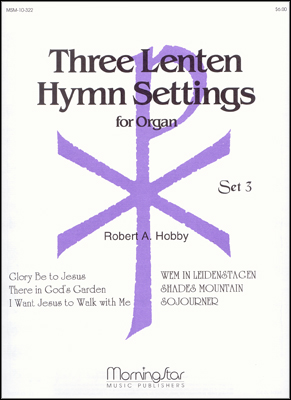- |
User Links
There in God's Garden
Hymn Information
- First Line
- There in God's garden stands the Tree of Wisdom
- Author
- Király Imre von Pécselyi, ca. 1590-1641
- Translator
- Erik Routley, 1917-1982
- Tune Name
- SHADES MOUNTAIN
- Composer
- K. Lee Scott, b. 1950
- Topic
- Church Year: Palm Sunday/Triumphal Entry · Jesus Christ: Healer · Jesus Christ: Savior · Love: Christ's Love for Us · Elements of Worship: Forgiviness and Grace
Copyright Information
- Text Copyright
- © 1976 Hinshaw Music, Inc.
- Tune Copyright
- © 1987 Birnamwood Publications, a div. of MorningStar Music Publishers, Inc.
- Reprint/Projection Information
- Words: Permitted with a license from CCLI.com or from OneLicense.net. If you do not own one of these licenses, please contact the copyright holder for permission.
- Music: Permitted with a license from CCLI.com or from OneLicense.net. If you do not own one of these licenses, please contact the copyright holder for permission.
Scripture References
Further Reflections on Scripture References
In Revelation, John beholds the tree of life, which bears twelve kinds of fruit and whose leaves “are for the healing of the nations.” The tree is personified in this hymn text as Jesus Christ himself, whose passion, death, and resurrection offer “healing, strength, and pardon” to all peoples and nations. Péceselyi’s poem is also a confession of our sin and an assurance of our pardon, as we commend ourselves to God using the very words of Christ, who on the cross commended himself to the Father.
Sing! A New Creation
Inspired by a Hungarian Good Friday poem on the tree image in Scripture, Erik Routley’s text personifies the tree of life in Revelation 22:2 as Jesus Christ, whose death and resurrection, offer “healing, strength, and pardon” to all peoples.
Bert Polman
Confessions and Statements of Faith References
Further Reflections on Confessions and Statements of Faith References
The Catechism says that those who know Christ’s forgiveness are “to thank God for such deliverance” (Heidelberg Catechism, Lord’s Day 1, Question and Answer 2). As a result, “With our whole lives we may show that we are thankful to God for his benefits, so that he may be praised through us, and that we may be assured of our faith by its fruits, and so that by our godly living our neighbors may be won over to Christ” (Heidelberg Catechism, Lord’s Day 32, Question and Answer 86).
There in God's Garden
Additional Prayers
There in God's Garden
Tune Information
- Name
- SHADES MOUNTAIN
- Key
- F Major
- Meter
- 11.11.11.5
Recordings
Musical Suggestion
- Have a choir introduce the first few stanzas of the song, with the congregation joining in no later than stanza 5, which is a proclamation all should sing.
- Invite children to sing this song or have the text read in their Sunday school classes; encourage them to draw pictures based on the images they sing about or read in this text. These images either could be projected during a worship service, used as bulletin covers, or held by children as they walk the aisles with their own drawings while the congregation is singing the song.
- Have a soloist sing stanza 4 as “the Voice” that welcomes the weary.
- Use full accompaniment and instrumentation with a trumpet on the final stanza, or create a descant by using the tenor line.
- Try not to rush this hymn; instead make sure to savor the rich text and strong tune.


 My Starred Hymns
My Starred Hymns






